
- Red Search
- Resources
- Smartwatch Statistics Australia
Smartwatch Statistics Australia: Users, Sales, Growth Trends
-
 Daniel Law
Daniel Law
The smartwatch market in Australia has been growing steadily, and it is easy to see why. You’re not looking for a basic watch that tells you time—you’re looking for a device that mixes style with convenience. Smartwatches can do it all now, from tracking your fitness and health metrics to helping you make mobile payments immediately.
This blog will discuss smartwatch trends and statistics, including wearable tech sales in Australia. This easy-to-read guide will also break down consumer preferences, top brands, and up-and-coming trends.
Understanding the Growth of the Smartwatch Market
Evolution Over the Past Decade
The Australian market for smartwatches has grown in the last ten years. Once a novelty, they are now part of Australian overall fitness tracking, communication, and health monitoring equipment.
Major indicators encompass the launch of a new version, technology innovation, and people’s sensitisation to health conditions, which can be grouped as a change of perception towards the gadget.
Market Size and Revenue Insights
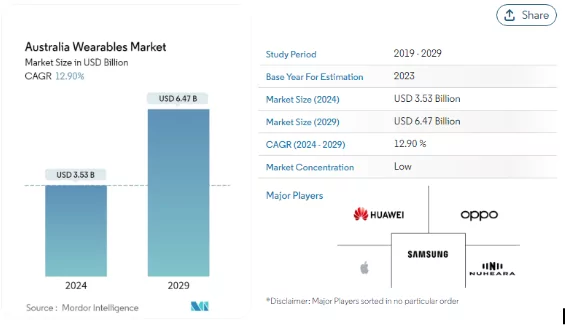
The Australian market is estimated to reach USD 3.53 billion in 2024, and in the same year, it will grow to USD 6.47 billion in 2029. This is just how much Aussies love their smartwatches to track fitness, see health outcomes, and stay connected.
These wearable devices’ fitness tracking capabilities let you measure your physical activity, transforming preventive care. This also helps healthcare professionals further understand the use of smartwatches in chronic disease prevention.
Year-on-Year Sales Trends
The Australian smartwatch market has experienced phenomenal growth over the last few years. Let’s look at the annual growth rate figures from 2019 to 2024 to understand how fast the demand grows.
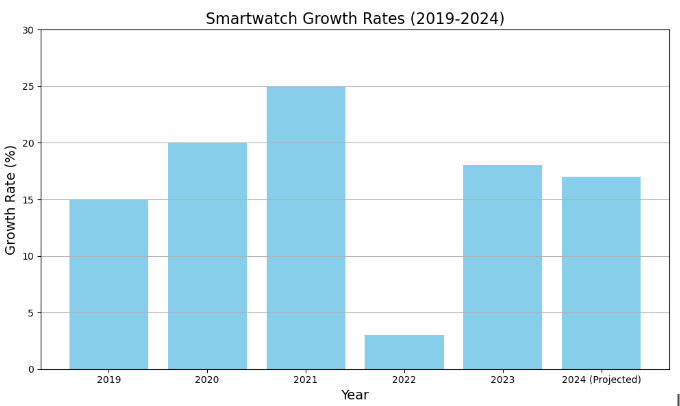
- 2019: Smartwatches became a trend in 2019, with sales growing steadily as more consumers embraced their device’s advantages. This year, those markets expanded by about 15% as people who sought more advanced technology embraced these devices for fitness and connectivity.
- 2020: Sales of smartwatches have witnessed fantastic leaps throughout 2020 due to the health and wellness focus that has everyone looking ahead, with growth of approximately 20%. The year largely marked a shift with increasing numbers of consumers looking for devices that could track levels of fitness and health, especially during the pandemic.
- 2021: It continued to grow at a healthy 25% growth rate. Over 100 million smartwatches are shipped worldwide. More brands have entered the market, offering improved features ranging from ECG monitoring to blood oxygen tracking. As a result, it attracts good attention from buyers.
- 2022: This year, smartwatch sales grew by only 3% as consumers got used to wearing them, and brands came out with even more complicated models. Smartwatches are a tool for fitness, but they are also a fashion item that can reach another consumer market.
- 2023: In 2023, growth stabilised at 18% as the market matured. Even though many people got accustomed to some smartwatches, many Australians still bought them for their unique health benefits and because of how easily they could be integrated with other devices.
- 2024 (Projected): The market for smartwatches in Australia will likely be stable in 2024, with an estimated growth rate of 17%. This momentum is driven by a 22% increase in shipments of basic watches.
Who Is Buying Smartwatches in Australia?
Today, smartwatches are a must-have for many Aussies. Who’s getting on that bandwagon? Let’s break this down.
Age and Gender
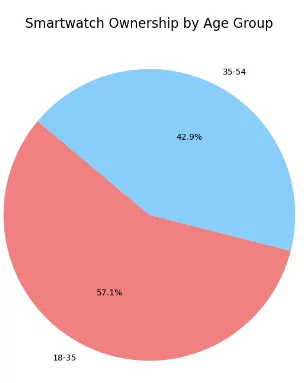
The smartwatch demographics show that 40% of people aged 18 to 35 own one, while those aged 35 to 54 are 30% smartwatch users. That is not surprising because younger people in their 20s and 30s like to follow their fitness goals or stay updated on the go.
Income and Profession
Another potential indicator would be the source of income; in this case, people who earn more are more likely to spend on a smartwatch. Studies show that 60% of smartwatch users in Australia have annual earnings of $75,000 or more.
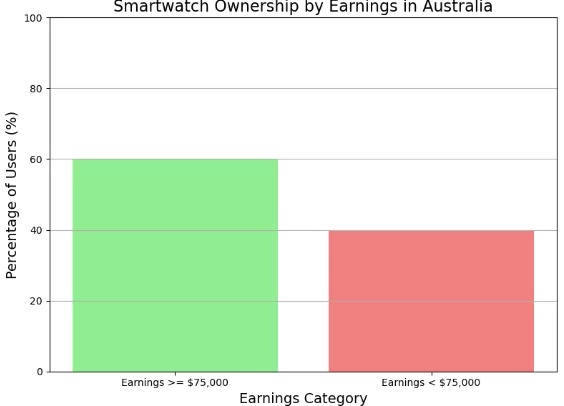
Why Are Australians Embracing Smartwatches?
Fitness and Activity Tracking
One of the top reasons consumers in Australia buy a smartwatch is it is like a personal virtual trainer for fitness enthusiasts. They remind you to get moving, encourage more activity through movement reminders, and record key health metrics such as daily steps, heart rate, and calories burned. Having all your workout data at your fingertips is a huge deal, keeping you on top of your health and fitness game.
Health Monitoring Simplified
Smartwatches provide health metrics, including heart rate and sleep quality. They also offer an alert service for irregular heartbeats, giving Australians immediate health management.
Seamless Connectivity
A smartwatch simplifies keeping connected even as you receive calls, texts, and notifications without needing your phone. Such gadgets inform you as you continue working or moving around with minimal distraction.
Fashion Meets Function
Smartwatches are fashion accessories rather than gadgets. With their customisable faces and sleek designs, Australians can align their tech with their style.
Boosting Productivity
Smartwatches increase productivity among busy Australians with calendar integration, reminder tasks, and voice assistants. They combine fitness and health with connectivity and style, putting the wearable device front and centre among Aussie choices. The health and fitness industry markets these devices as a positive lifestyle choice, referencing their real-time ability to provide health information.
How Smartwatch Adoption Differs in Urban and Rural Areas
City Convenience vs. Country Needs
The adoption of smartwatches varies between Australia’s urban and rural regions, mainly due to their lifestyles. In the metropolitan areas, adoption is higher as they are relatively fast-paced.
They like how easy it is to manage agendas, keep in touch, and stay fit through modern features that combine health and ecological adjustment to the system of technologies of such watches. Smartwatches penetrate the market very minimally in rural areas.
However, practicality over style trumps everything. Smartwatches come with GPS tracking, extra-long battery life, and health monitoring for country people. These features will provide security and connectivity in areas without highly developed infrastructure, making them useful for rural living.
Internet access, cost of data ownership, and regional needs influence smartwatch adoption rates across Australia.
Best-selling Smartwatches 2024 Australia
Apple Dominates the Australian Market
Apple’s watch market share in Australia is 51%, making it at the front of the line for smartwatches. It focused on its performance with iPhones and the health features, including an ECG and blood oxygen monitoring, for Apple to stand atop in Australia.
Competitors: Samsung, Fitbit, and Garmin
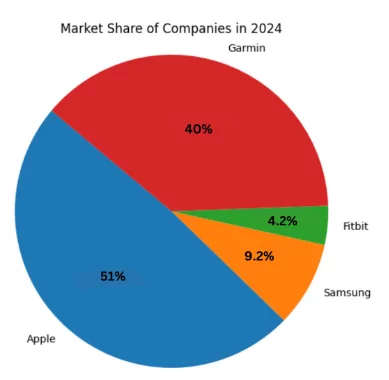
- Samsung: Samsung sells the Galaxy Watch series and boasts a market share of 9.2% as of 2024. It has targeted selling fitness tracking and customisation features to Android users.
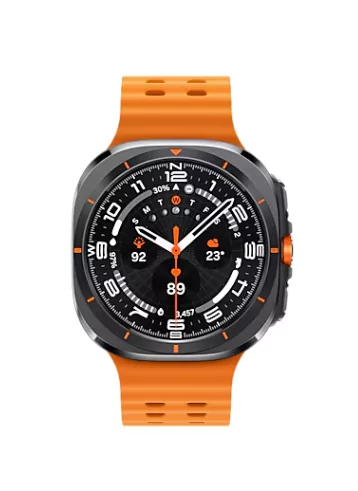
Galaxy Watch Ultra (LTE, 47mm)
- Fitbit has 4.2% of the market share and is very popular among enthusiasts for tracking fitness activities and providing detailed health information.
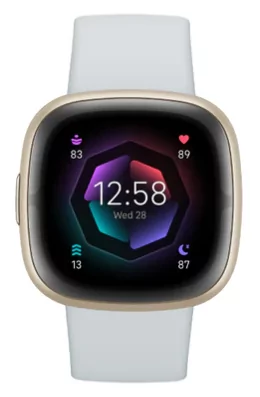
Fitbit Sense 2 Smart Rubber Band
- Garmin: The segment leader in sports watches had a 40% market share as of 2024 and was also the leader in the outdoor and sports smartwatch segments.
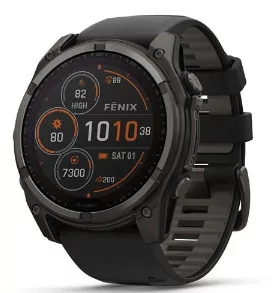
Emerging Brands and New Players
New entrants Huawei and Xiaomi, among others, will start to challenge the Australian market with these low-cost alternatives even though they are crammed full of the latest features. They will appeal to the price-conscious shopper and, over the coming years, are expected to take a further market share.
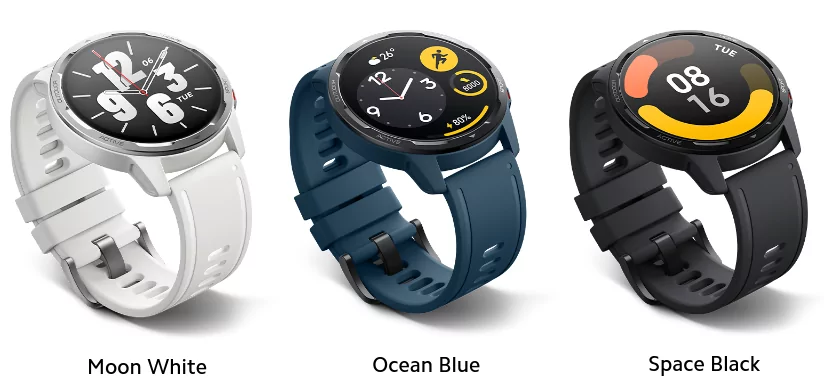
Features That Australian Consumers Value
Health and Fitness
Health and fitness tracking remain the top features desired by smartwatch buyers in Australia. Features like heart rate monitoring, ECG, and sleep tracking fuel sales, especially during the post-pandemic, when health consciousness has peaked.
Battery Life and Durability
Australians, especially outdoor enthusiasts, prioritise smartwatches with durable designs and long battery life. Brands like Samsung and Garmin are well-known for their rugged models and extended battery life, which cater to adventurers and athletes.
Emerging Trends in the Smartwatch Market
The Shift Towards Health Monitoring
Health issues like COVID-19 and so on continue to define consumer choices. Therefore, more smartwatches with rich health features, such as monitoring blood oxygen levels, tracking stress, and ECG, are in high demand. Australians are now seeking wearables that provide real-time health information.
Luxury Smartwatches on the Rise
High-end luxury smartwatches, often premium in materials and design, are gaining popularity in Australia. TAG Heuer and Montblanc have launched smartwatches into the market, targeting those who live up to their style standards as much as their functionality.
The Environmental Impact of Smartwatch Usage
E-Waste Challenges
The more people become enthusiastic about using smartwatches, the more electronic waste is likely to occur. In Australia, problems with the disposal and recycling of such products are also coming to light. More and more manufacturers are being pushed for sustainable practices, such as recyclable materials and eco-friendly packaging.
Sustainable Manufacturing Practices
The largest companies in the world are now embracing sustainability. Apple promised to use recycled aluminium, among other sustainable materials, in its series of Apple Watches as a marker for others.
Frequently Asked Questions
How many Australians own a smartwatch?
As of 2023, 36% of Australians own smartwatches. Demand is also gradually growing as people become more comfortable using wearable technology for workouts, convenience, and health monitoring.
What is the most popular smartwatch in Australia?
The Apple Watch continues to dominate the Australian market as the best-selling smartwatch. It is closely followed by the Samsung Galaxy Watch and Fitbit models, which appeal to users with specific fitness and lifestyle needs.
Are smartwatches more popular with younger or older Australians?
Smartwatches are more popular among young Australians aged 25 to 44. However, older Australians are increasingly adopting smartwatches for health monitoring.
What features do Australians look for in a smartwatch?
The most important features include fitness tracking, battery life, and smartphone integration. Australians value smartwatches that help them monitor their health and stay connected throughout the day.
How has the Australian smartwatch market changed in recent years?
The wearable tech trends in the Australian market have seen rapid growth in health-related features and the rise of luxury models. Post-pandemic, more consumers are seeking smartwatches that offer comprehensive health monitoring capabilities.
The Future of the Australian Smartwatch Market
Projected Growth and Innovations
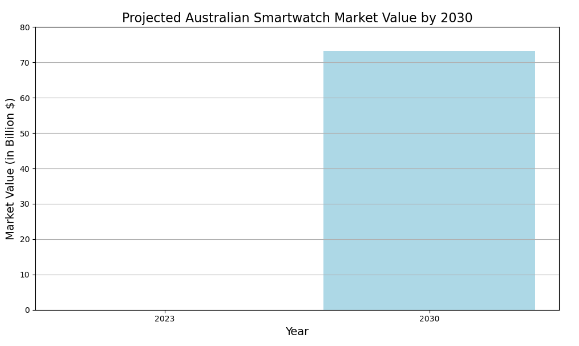
By 2030, the Australian smartwatch market is expected to reach $73.3 billion in value. Innovations such as Artificial Intelligence-driven medical devices that unlock micropatterns of daily activity related to early detection of cardiovascular disease, extended battery life, and luxury smartwatches will drive future growth.
Potential Challenges
Despite the growth, the smartwatch market could face challenges like market saturation and pressure to innovate with battery technologies. Brands must continue to adapt to consumer demands for better health features and longer-lasting devices.
Grow Your Market Share with Red Search
As the smartwatch market in Australia opens up, it’s the perfect time for brands and businesses to review their digital strategy. From research to industry data, with many other inputs guiding them, our SEO experts can help optimise your company’s online presence, gain visibility, and attract more customers.
Experience how your business can thrive online by speaking with our experienced SEO experts today.
Written by





